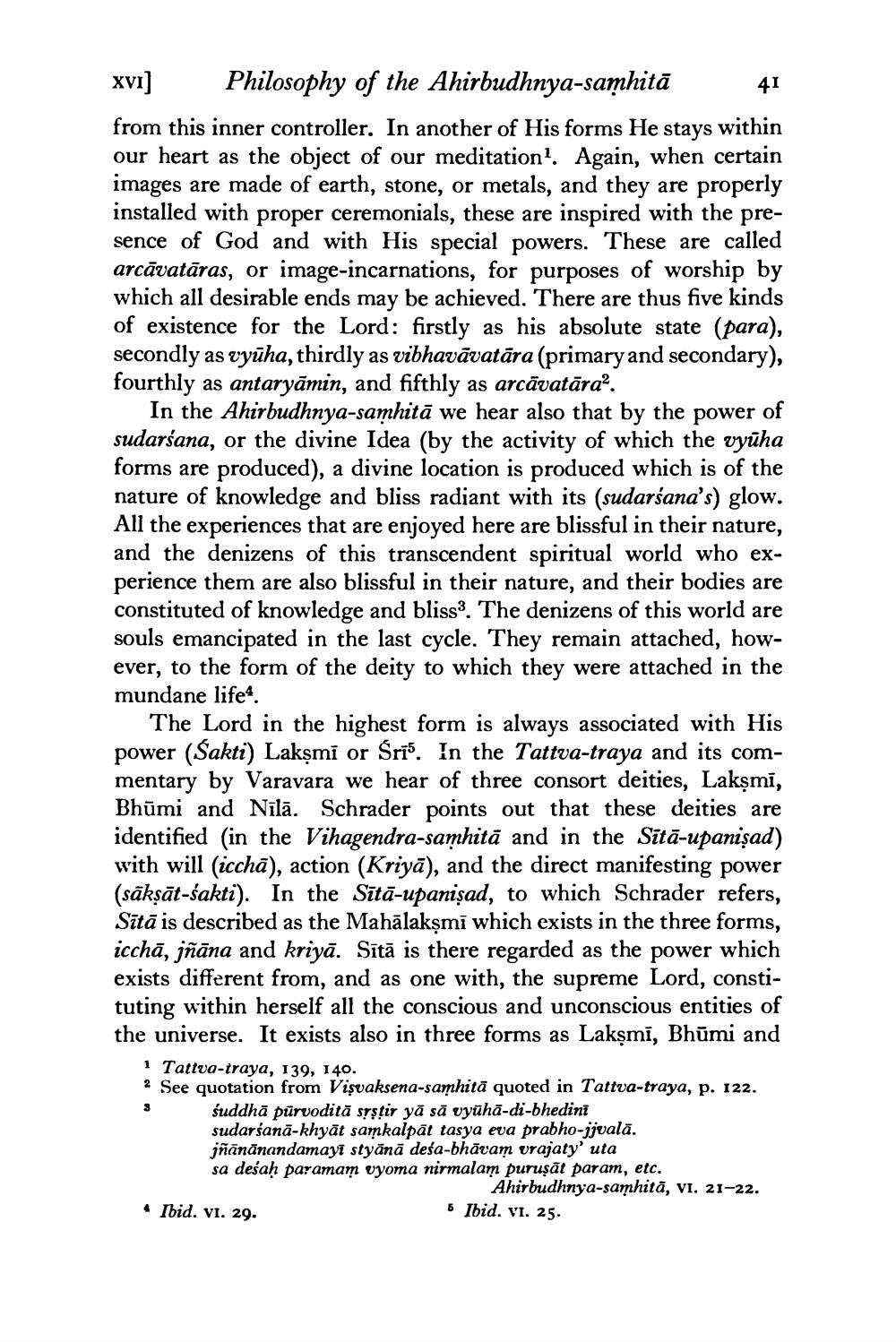________________
xv1] Philosophy of the Ahirbudhnya-samhitā from this inner controller. In another of His forms He stays within our heart as the object of our meditation?. Again, when certain images are made of earth, stone, or metals, and they are properly installed with proper ceremonials, these are inspired with the presence of God and with His special powers. These are called arcāvatāras, or image-incarnations, for purposes of worship by which all desirable ends may be achieved. There are thus five kinds of existence for the Lord: firstly as his absolute state (para), secondly as vyūha, thirdly as vibhavāvatāra (primary and secondary), fourthly as antaryāmin, and fifthly as arcăvatāra”.
In the Ahirbudhnya-samhitā we hear also that by the power of sudarśana, or the divine Idea (by the activity of which the vyūha forms are produced), a divine location is produced which is of the nature of knowledge and bliss radiant with its (sudarśana's) glow. All the experiences that are enjoyed here are blissful in their nature, and the denizens of this transcendent spiritual world who experience them are also blissful in their nature, and their bodies are constituted of knowledge and bliss 3. The denizens of this world are souls emancipated in the last cycle. They remain attached, however, to the form of the deity to which they were attached in the mundane life.
The Lord in the highest form is always associated with His power (Sakti) Lakşmi or Sriø. In the Tattva-traya and its commentary by Varavara we hear of three consort deities, Lakşmi, Bhūmi and Nilā. Schrader points out that these deities are identified (in the Vihagendra-samhitā and in the Sītā-upanişad) with will (icchā), action (Kriyā), and the direct manifesting power (sākṣāt-sakti). In the Sītā-upanişad, to which Schrader refers, Sītā is described as the Mahālakṣmi which exists in the three forms, icchā, jñāna and kriyā. Sītā is there regarded as the power which exists different from, and as one with, the supreme Lord, constituting within herself all the conscious and unconscious entities of the universe. It exists also in three forms as Laksmi, Bhūmi and
1 Tattva-traya, 139, 140. 2 See quotation from Visvaksena-samhita quoted in Tattva-traya, p. 122.
śuddhā pūrvoditā systir yā să vyühā-di-bhedini sudarśanā-khyāt samkalpāt tasya eva prabho-jjvalā. jñānānandamayi styānā deśa-bhāvam urajaty' uta sa deśaḥ paramam vyoma nirmalam puruşāt param, etc.
Ahirbudhnya-samhitā, vi. 21-22. • Ibid. vi. 29.
5 Ibid. vi. 25.




